Small birds are always vigilant, luckily I was too when this feathered beauty distracted me from landscape photography and gave me the chance to share my thoughts about head angles, poses and crops.
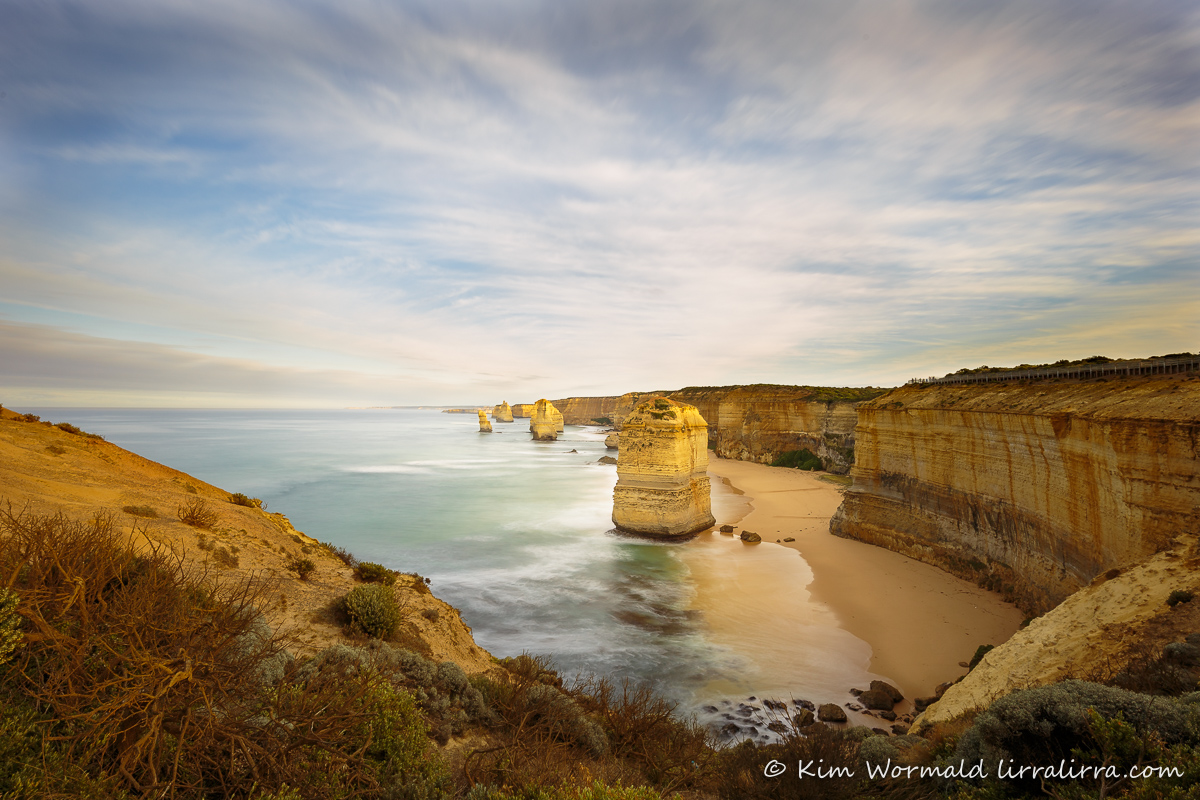
The Twelve Apostles, Great Ocean Road, Port Campbell
15 seconds, f/11, ISO 50
I never thought I’d put camera settings like this on lirralirra! At the end of April a photographer friend and I made a quick, but brilliant, trip to Port Campbell. Carol’s a superb landscape photographer and patiently shared some of her insights with me. We were up well before sunrise and it was still completely dark when we arrived at the Twelve Apostles car park, which was already full. Luckily we found a nearby lane and I backed in to a grassy spot, carefully avoiding a half-hidden ditch.
We joined the trail of human ants walking through the under-road tunnel to the cliff edge, lighting the pathways with our phone torches. And gradually the piccaninny dawn began to light the sky; it was mesmerising.
There were many photographers among the pilgrims but I didn’t see any others trudging along with a couple of long lenses as well as their superbly tiny landscape lenses. We edged into spaces at the railing and set up our tripods. Mine is a large, sturdy Gitzo liberally covered with neoprene camouflage – it looked a bit preposterous with my Canon 5DIII and a tiny little EF 16-35mm lens perched on top. I experimented with a few landscape shots then saw a flurry of feathers flutter past and land in a bush on the other side of the pathway. I instantly abandoned my little set up and swung my Canon 5DsR and attached EF 200-400mm (also liberally covered with neoprene camouflage) in action. It must have looked pretty surprising as people laughed aloud and I had to admit, to more laughter, that I’m really a bird photographer.
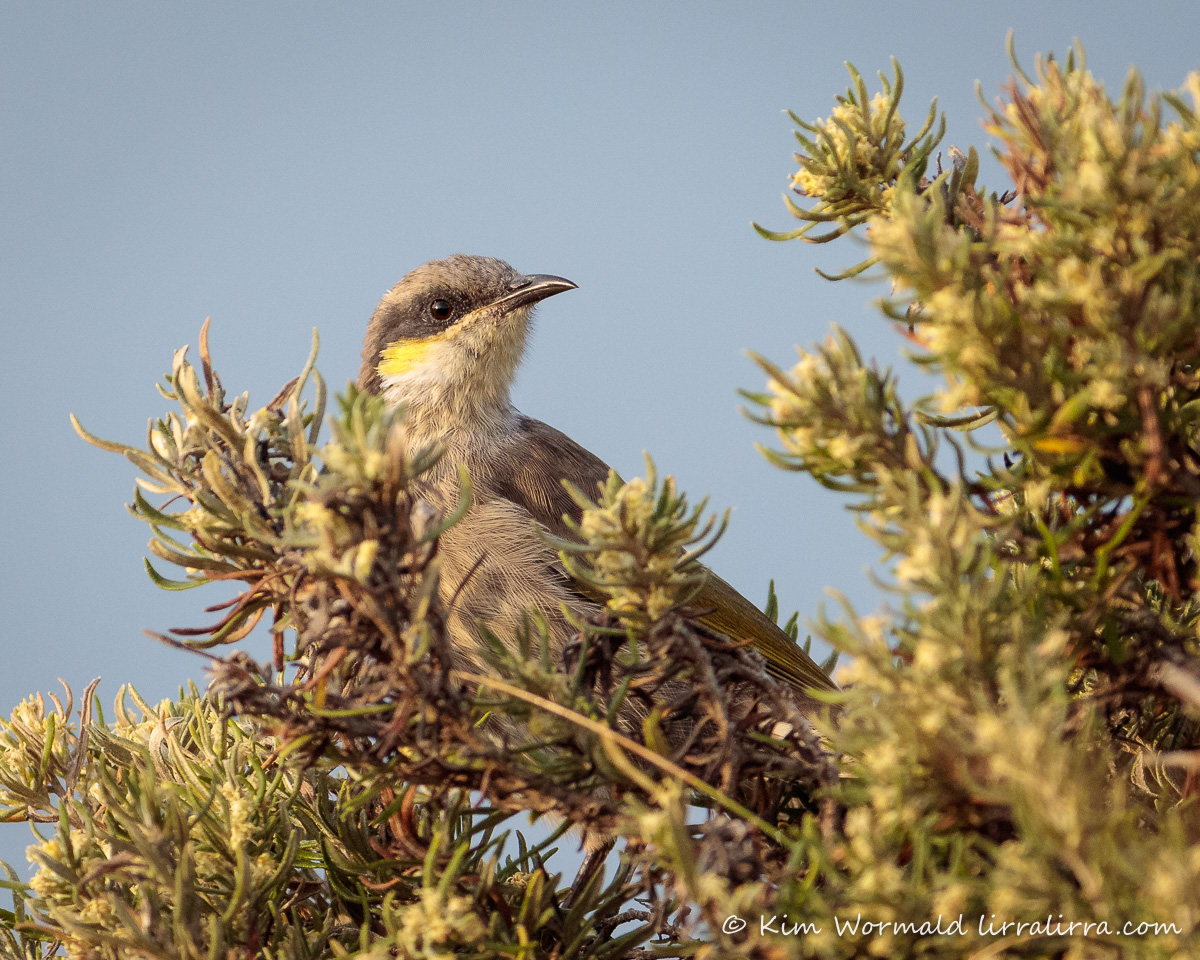 Singing Honeyeater (Lichenostomus virescens)
Singing Honeyeater (Lichenostomus virescens)
1/1000, f/5.6, ISO 1250
Handholding the Canon EF 200-400mm isn’t as difficult as it looks as most of the weight is close to the camera body. It’s a beaut lens and with its built in extender I was able to take these shots at focal lengths up to 560mm, which was great as the bird wasn’t particularly close.
Singing Honeyeaters can be found across most of mainland Australia. They are about 19cm in length and weigh about 26g. For some reason the sight and sound of them always makes me happy. This bird’s territory must be one of the busiest known to honeyeaters. Their markings are beautiful. I especially like their facial colours with the dark streak that runs from their bill to their neck, underscored with sunshine yellow.
And this brings me to ‘angles’. When I’m photographing birds I prefer the angle of their heads to be pleasing, which generally means closer than a full profile but not with their heads turned away from the camera or directly facing the camera. It was Tom Oliver, a much-missed founding member of the BirdLife Australia Photography Group, who first spoke with me about angles – there is a perpetual bi-annual award offered in his name through the group, that might interest photographers. Of course this changes sometimes, some of my emu shots come to mind. The head angle in the shot above is my favourite. I can see the shape of the bill and the catchlight in the eye – exquisite.
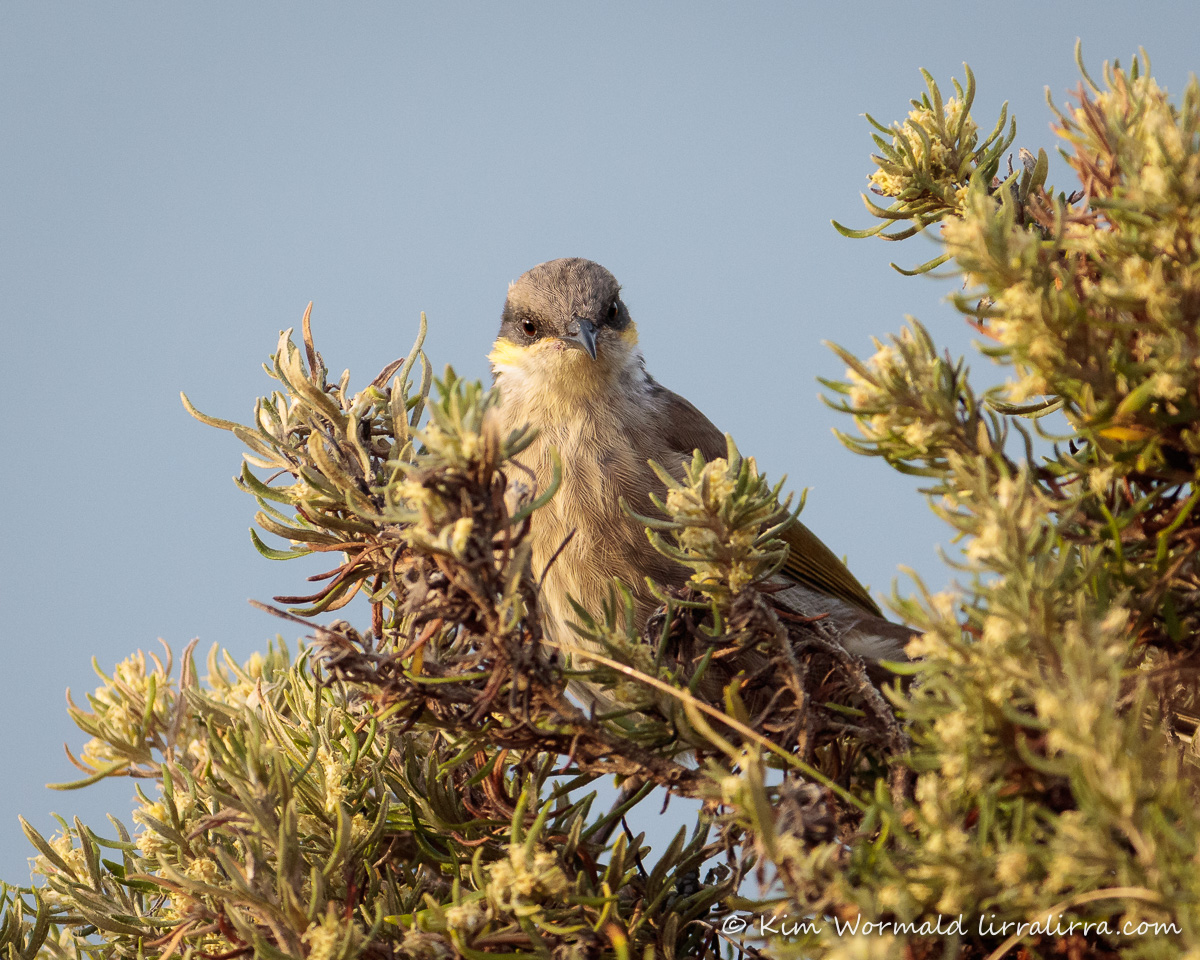 Singing Honeyeater (Lichenostomus virescens)
Singing Honeyeater (Lichenostomus virescens)
1/1000, f/5.6, ISO 1250
I can hardly bear to post the image above, it’s my least favourite head angle as it means the bird has been disturbed. In this case we were surrounded with people so I know that it wouldn’t have been too worried about me, maybe it was just as surprised as everyone else that it was being aimed at instead of the sunrise lighting the limestone stacks.
Another way I could tell it was curious, rather than distressed, is that it didn’t try to make itself look bigger by fluffing its feathers, and that it only glanced my way momentarily before starting to feed. Though I have had White-browed Scrubwrens seek me out, even when I’m carefully hidden beneath a fabric hide, to stare straight at me with their feathers well and truly fluffed.
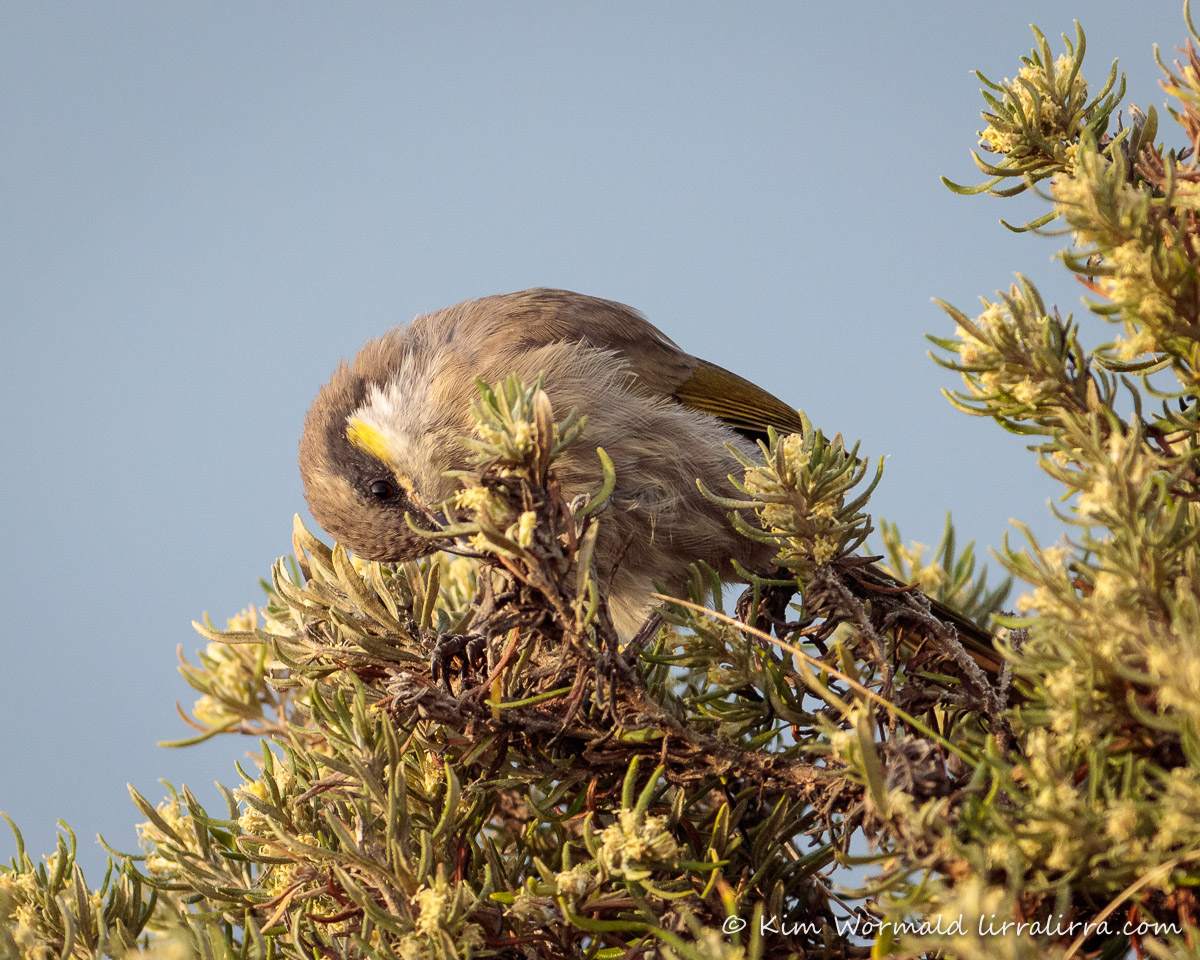 Honeyeater (Lichenostomus virescens)
Honeyeater (Lichenostomus virescens)
1/1000, f/5.6, ISO 1250
Singing Honeyeaters often forage alone or in small groups, seeking nectar and fruit along with the occasional insect; this one was alone as it sipped nectar from deep inside the blossoms.
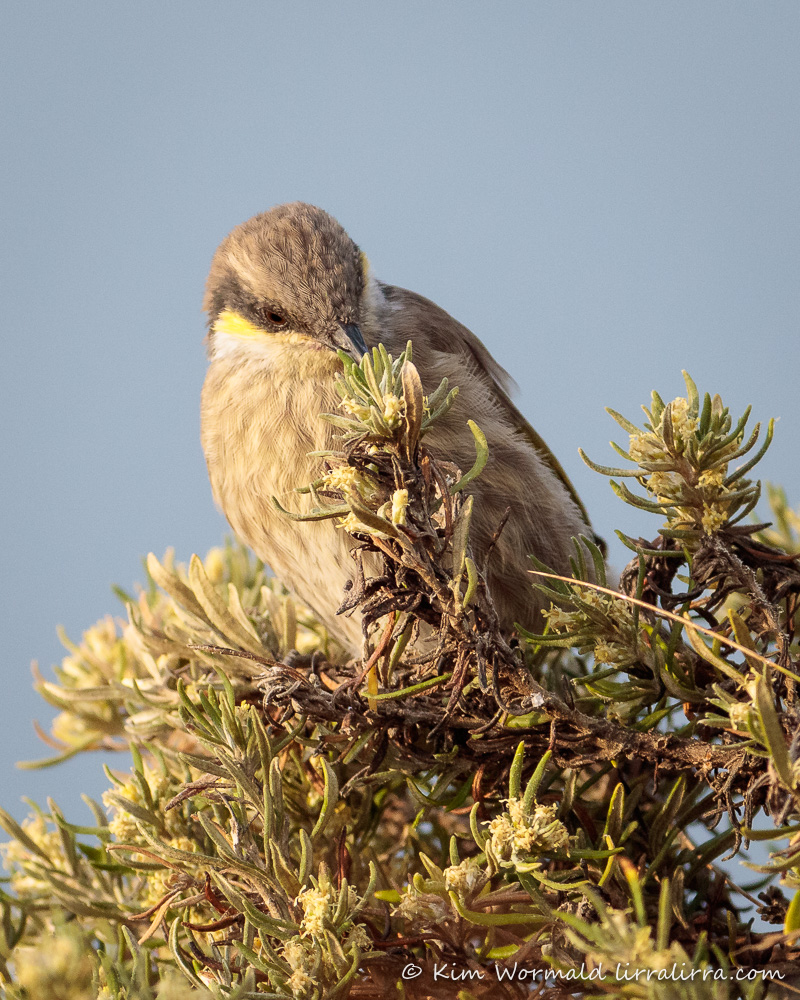 Honeyeater (Lichenostomus virescens)
Honeyeater (Lichenostomus virescens)
1/1000, f/5.6, ISO 1250
I like the way honeyeaters peer into the flowers before drinking. I assume they’re checking for insects but maybe with some flowers they can tell how much nectar is hiding. Once I was astounded to see New Holland Honeyeaters carefully and deliberately throwing bees away from their blossoms, I wrote about it here: Fascinating Behaviour
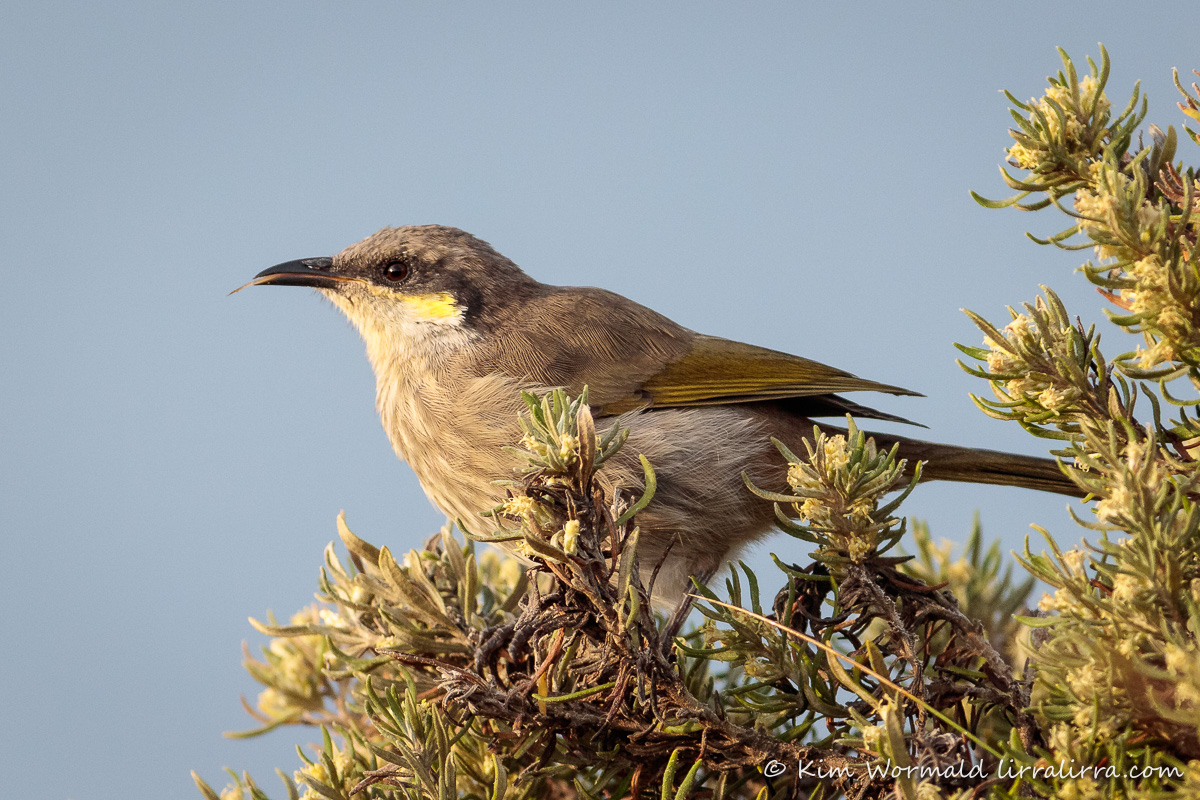 Honeyeater (Lichenostomus virescens)
Honeyeater (Lichenostomus virescens)
1/1000, f/5.6, ISO 1250
As my cameras take several shots per second I’m not always entirely sure of what I’ll capture. Sometimes the bird will pull it’s nictitating eyelid across its eye, or maybe an insect will photobomb the image, but sometimes something more interesting happens like this bird poking out its brush-tipped tongue.
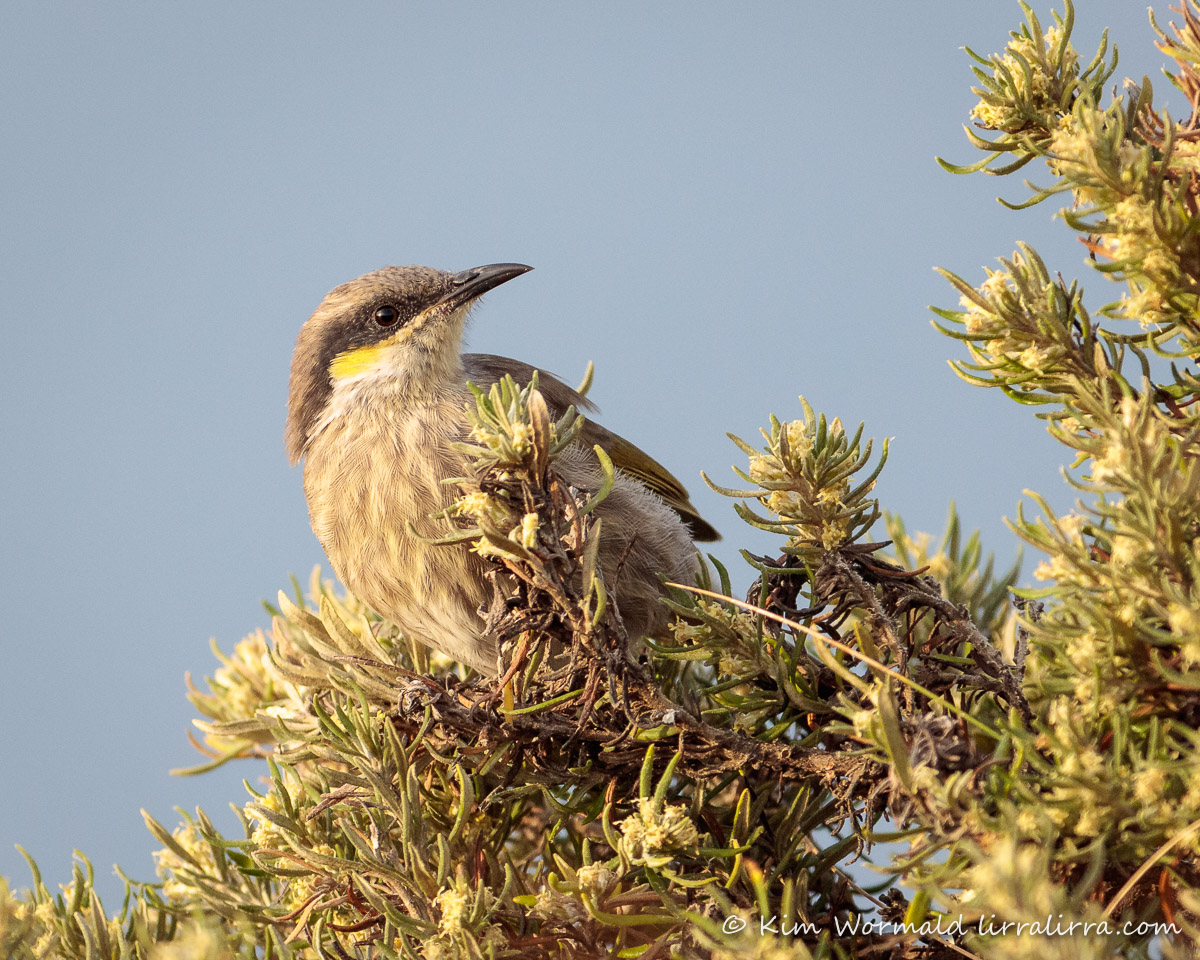 Singing Honeyeater (Lichenostomus virescens)
Singing Honeyeater (Lichenostomus virescens)
1/1000, f/5.6, ISO 1250
Small birds are constantly vigilant and this one was no exception; it kept scanning the sky for airborne predators. I like the way it almost looks part of the bush. This image is very similar to the first shot but without the casual eye-contact.
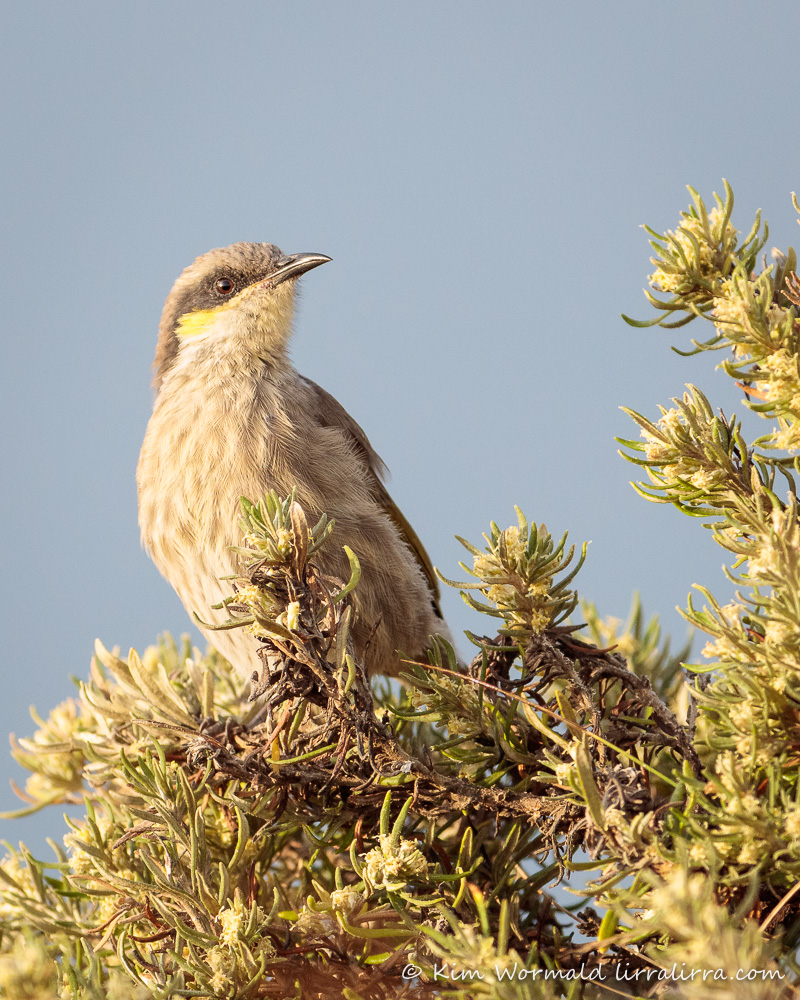 Singing Honeyeater (Lichenostomus virescens)
Singing Honeyeater (Lichenostomus virescens)
1/1000, f/5.6, ISO 1250
The image above suits a portrait shape instead of a landscape as the honeyeater is stretching itself tall to check its surroundings.
I’ve just worked out that the shutter speed for the honeyeater shots is 15,000 times faster than for the landscape shots. How I love technology!
I wasn’t going to announce this yet but I’ve finally revamped my Redbubble gallery, with a complete change of images, to make it easier to purchase prints and cards – Redbubble’s print quality is outstanding. I’m mentioning this now in case anyone is stuck for a Mother’s Day gift. When the page is completely ready I will add a ‘shop’ button next to ‘gallery’ above. Click here if you’d like an early bird peek: Redbubble Lirralirra
Happy birding
Kim
EXHIBITION 1
My thanks to the organisers for inviting me to be part of the Melbourne Nature Photography Exhibition, details below. From the look of Tuck Leong’s image it will be a stunning exhibition to visit.
EXHIBITION 2
Once again I have images displayed on the gallery wall at the Chosen Bean Cafe at Mountain Gate in Ferntree Gully. If you’re in the area you might enjoy visiting this super friendly hidden gem.
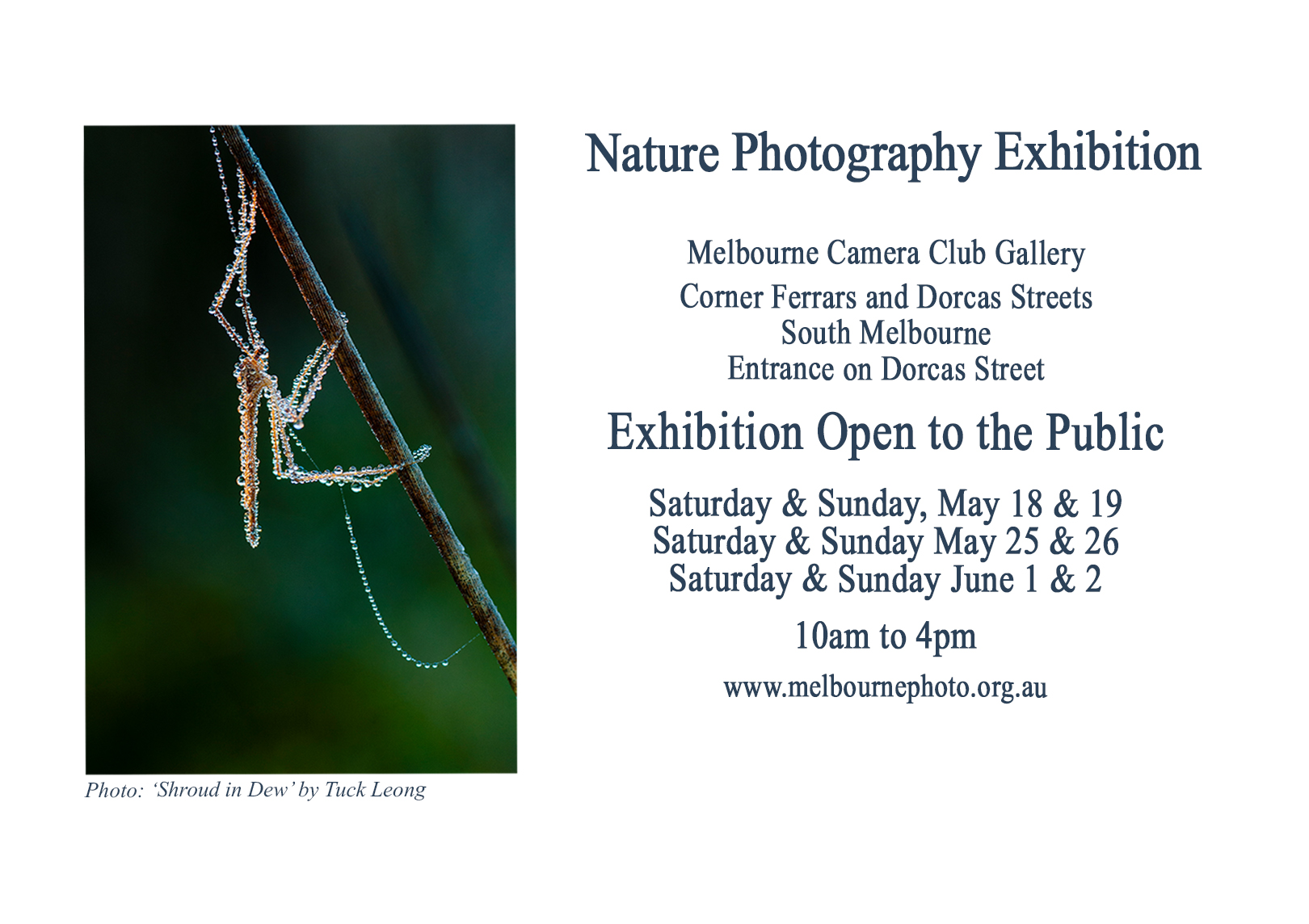
~ thank you for visiting
~ if you would like to join the subscribers receiving a weekly email when lirralirra is updated, please subscribe above right

Love the landscape… but the bird is SO delicate and pretty, thanks for sharing and growing our wonder and curiosity.
I’ve just finished working on this week’s post Syndy, it was difficult to write about yet another duck shooting season. Your flurry of comments has lifted my spirits and I thank you, Kim
Hi Kim,
Amazing images of this honeyeater ! Colors are beautiful.
Hope you are fine 🙂
Thanks for getting up so early so we can see what was around at that time. Me, I wouldn’t be able to focus on anything.
Whenever I’m awake so early I wonder why I don’t watch the sunrise every morning, it’s a beautiful time of day.
WOW, WOW, and WOW again.
Stunningly beautiful bird, in glorious surroundings.
It doesn’t get much better than that.
Thank you for sharing the wonder and the joy.
I really like them too EC, very sweet little birds. I couldn’t keep looking at the view, as glorious as it is.